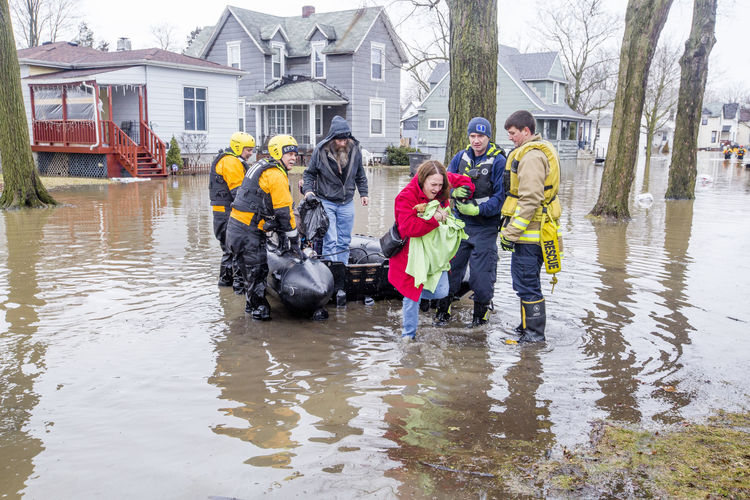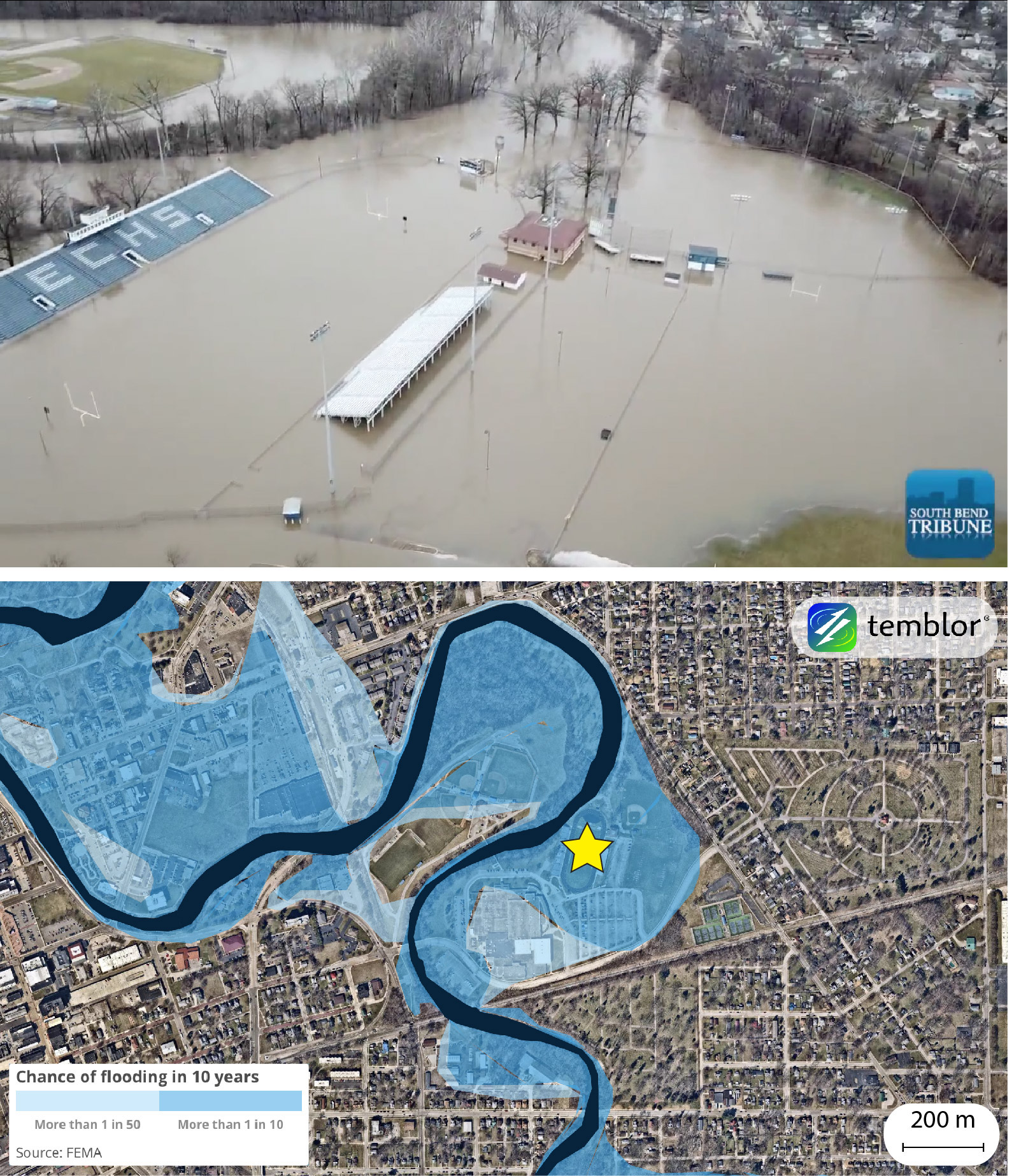By David Jacobson, Temblor

Heavy rain, with more to come
In the last three days, heavy downpours from Texas to Michigan have resulted in at least 19 rivers swelling to major or record flood stage, with fears that that number could rise to 30 by the weekend. This is the result of 4-8 inches of rain across the Midwest, more than what most of the region sees in a month, combined with heavy snow melt, and frozen ground. Unfortunately, the area will get no relief, as the weather system has stalled, which could bring another 4-5 inches of rain. While this has prompted the National Weather Service to issue flood warnings from Texas to Vermont, some residents are already feeling the impacts.
States of emergency issued

As of this morning, states of emergency have already been issued in both Elkhart, Indiana, and Lansing, Michigan. In Elkhart, a suburb of South Bend, residents have already been flooded out of their homes, schools have been closed, and emergency shelters have been set up. According to local Mayor Tim Neese, “This city has not seen flooding like this in the last 45 years.” In addition to people being evacuated, residents have been asked to stay off roads, leaving room for first responders and emergency personnel. Further complicating matters is that rising water forced the wastewater treatment plant in nearby South Bend to release untreated water into the St. Joseph River, which is currently two feet higher than its previous record. It is the St. Joseph River which has caused flooding in Elkhart. While much of the focus right now is on areas which have already sustained flooding, across much of the Midwest, similar situations are taking place as local officials fear that more rivers will flood residential areas as rain continues to fall.
How do FEMA flood maps stack up?
Given the severity of some of the flooding, we thought we’d look at how current flooding compares to where FEMA suggests is most vulnerable. It should be stressed that if you have a mortgage and live in an area where FEMA deems there is greater than 1 chance in 10 of flooding in a 10-year period, you are required to carry flood insurance. For all other homeowners, flood insurance is optional.


What can be seen from the above pictures and corresponding maps, areas that are currently flooded fall within the FEMA flood zones where there is more than 1 chance in 10 the area will be flooded in a 10-year period. However, it should be noted that it is possible that areas less susceptible have also flooded. Additionally, given the forecasted rain, these areas will likely experience greater flooding, which could extend into zones where flood insurance is not compulsory, even for those with mortgages. Should this story continue to develop, we will update this post or write an entirely new one.
References
ABC News
Accuweather
Time
US News
South Bend Tribune
Goshen News
- Beware quiet segments of the Philippine Fault - May 16, 2025
-
ډیری عوامل افغاني ټولنې د زلزلې پر وړاندې زیانمنوي
- August 11, 2022 - What’s happening this week in Humboldt County, California: The squeeze - February 6, 2019
